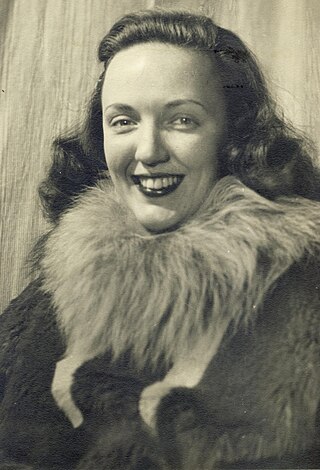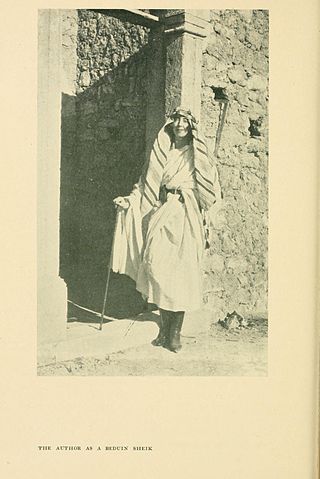Related Research Articles

The Royal Geographical Society (with the Institute of British Geographers), often shortened to RGS, is a learned society and professional body for geography based in the United Kingdom. Founded in 1830 for the advancement of geographical sciences, the society has 16,000 members, with its work reaching the public through publications, research groups and lectures.

Sir Clements Robert Markham was an English geographer, explorer and writer. He was secretary of the Royal Geographical Society (RGS) between 1863 and 1888, and later served as the Society's president for a further 12 years. In the latter capacity he was mainly responsible for organising the British National Antarctic Expedition of 1901–1904, and for launching the polar career of Robert Falcon Scott.

Edith Jackie Ronne was an American explorer of Antarctica and the first woman in the world to be a working member of an Antarctic expedition (1947–48). The Ronne Ice Shelf was named by her husband after her.

Wangarĩ Muta Maathai was a Kenyan social, environmental, and political activist who founded the Green Belt Movement, an environmental non-governmental organization focused on the planting of trees, environmental conservation, and women's rights. In 2004 she became the first African woman to win the Nobel Peace Prize.

Mary Henrietta Kingsley was an English ethnographer, writer and explorer who made numerous travels through West Africa and wrote several books on her experiences there. Historians have credited Kingsley's work with helping to shape Western perceptions of the culture of Africa and colonialism.

Dame Ruth Nita Barrow, GCMG DA was the first female governor-general of Barbados. Barrow was a nurse and a public health servant from Barbados. She served as the fifth governor-general of Barbados from 6 June 1990 until her death on 19 December 1995. She was the older sister of Errol Barrow, the first prime minister of Barbados.

Lars Christensen was a Norwegian shipowner and whaling magnate. He was also a philanthropist with a keen interest in the exploration of Antarctica.

Kathleen Jamie FRSL is a Scottish poet and essayist. In 2021 she became Scotland's fourth Makar.
Mariana Starke (1762–1838) was an influential English travel writer, though she also worked in other genres. She is best known for her travel guides to France and Italy, popular with British travellers to the Continent in the early nineteenth century. She wrote plays early in her career, before embarking on her first trip abroad in 1791. She worked as a translator over most of her working life, and latterly, also wrote poetry.

Margaret Wambui Kenyatta was a Kenyan politician. She was the daughter of the first President of Kenya, Jomo Kenyatta, and his wife Grace Wahu. She served as the mayor of Nairobi from 1970 to 1976 and as Kenya's Permanent Representative to the United Nations from 1976 to 1986. She was thereafter appointed as a Commissioner with the Electoral Commission of Kenya from 1992 to 2002.

Erica Mann was an architect and town planner who lived and worked in Kenya for almost all her adult life, after fleeing her home in Romania during the Second World War. She made a significant contribution to the 1948 master plan for Nairobi and also took a leading role in planning Mombasa and other parts of Kenya. She became interested in development projects seeking to improve living standards and was director of the "Women in Kibwezi" project, which was recognised at the United Nations Habitat II conference in 1996. The "Woman in Kibwezi" project was but one of several NGOs she headed across Kenya, many of them engaged in fostering women's cooperatives. In 2003 she was honoured with the title of Architect Laureate for Kenya.

The Southern CrossExpedition, otherwise known as the British Antarctic Expedition, 1898–1900, was the first British venture of the Heroic Age of Antarctic Exploration, and the forerunner of the more celebrated journeys of Robert Falcon Scott and Ernest Shackleton. The brainchild of the Anglo-Norwegian explorer Carsten Borchgrevink, it was the first expedition to over-winter on the Antarctic mainland, the first to visit the Great Ice Barrier—later known as the Ross Ice Shelf—since Sir James Clark Ross's groundbreaking expedition of 1839 to 1843, and the first to effect a landing on the Barrier's surface. It also pioneered the use of dogs and sledges in Antarctic travel.

Rosita Forbes, née Joan Rosita Torr, was an English travel writer, novelist and explorer. In 1920–1921 she was the first European woman to visit the Kufra Oasis in Libya, in a period when this was closed to Westerners.

Felicity Ann Dawn Aston is a British explorer, author and climate scientist.
The Ness Award is an annual award of the Royal Geographical Society to travellers, particularly those who have successfully popularised Geography and the wider understanding of our world and its environments. It was established in 1953 and named after Mrs Patrick Ness (1881–1962), an intrepid and well-to-do traveller throughout Africa and the first female Fellow of the Society.

The National Council of Women exists to co-ordinate the voluntary efforts of women across Great Britain. Founded as the National Union of Women Workers, it said that it would "promote sympathy of thought and purpose among the women of Great Britain and Ireland".

There may have been women in Antarctica, exploring the regions around Antarctica for many centuries. The most celebrated "first" for women was in 1935 when Caroline Mikkelsen became the first woman to set foot on one of Antarctica's islands. Early male explorers, such as Richard Byrd, named areas of Antarctica after wives and female heads of state. As Antarctica moved from a place of exploration and conquest to a scientific frontier, women worked to be included in the sciences. The first countries to have female scientists working in Antarctica were the Soviet Union, South Africa and Argentina.

This is a Timeline ofwomen in Antarctica. This article describes many of the firsts and accomplishments that women from various countries have accomplished in different fields of endeavor on the continent of Antarctica.

Mabel Virginia Anna Bent, was an Anglo-Irish explorer, excavator, writer and photographer. With her husband, J. Theodore Bent, she spent two decades (1877–1897) travelling, collecting and researching in remote regions of the Eastern Mediterranean, Asia Minor, Africa, and Arabia.

Louise Cosseron Bourbonnaud was born in Paris and was a French writer, explorer and philanthropist. who helped found the Relief Society for the Wounded of the Land and Sea Armies, which went on to become the French Red Cross. She also contributed to hospitals and a nursery in Paris.
References
- 1 2 3 H. F. S, 'Mrs. Patrick Ness: A Fearless Traveller', The Times, 3 May 1962.
- ↑ 'Marriages', The Times, 15 June 1903, p.1.
- 1 2 3 c.p (1962). "Mrs. Patrick Ness". African Affairs. 61 (244): 234–235. doi:10.1093/oxfordjournals.afraf.a095001.[ dead link ]
- ↑ 'Deaths', The Times, 23 April 1914, p.1.
- 1 2 3 Sarah L Evans (2016). "Mapping Terra Incognita: Women's Participation in Royal Geographical Society-Supported Expeditions 1913-1939". Historical Geography. 44: 30–44.
- ↑ Fred G. Alberts (1995). "Ness, Mount". Geographic Names of the Antarctic. National Science Foundation. p. 522.